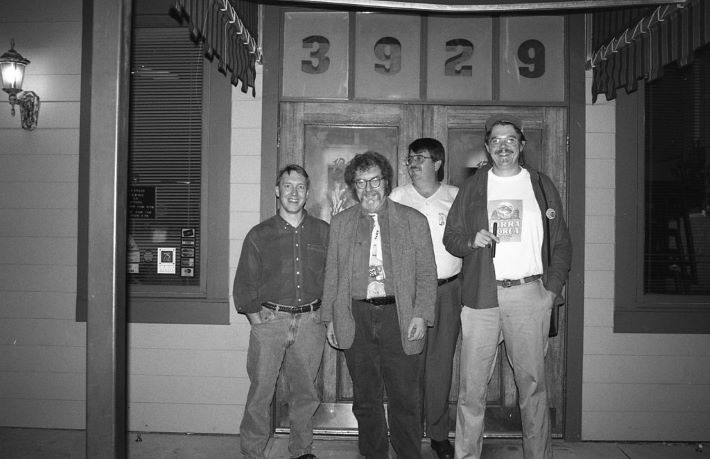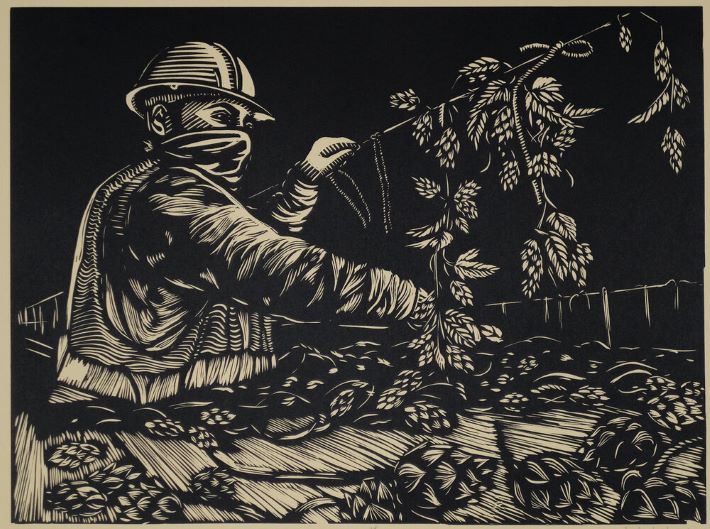Why do people suddenly care about Fat Tire?
OK, maybe they don’t really. I found this tasting note from John Frank at Axios Denver telling:
Fat Tire is like an old friend. You can immediately connect, even if it’s been too long since you last visited.
- The original pours a beautiful copper hue, easy-going with caramel and nut flavors that remind you it once counted as full-flavored craft beer.
- While well-made, the remake is uninspiring. It has a Honey Nut Cheerios aroma, and the flavors of sweet cereal that finish less satisfyingly.
The bottom line: You can probably drink more of them, but do you want to?
. . . even if it’s been too long since you last visited.
I spent more time Tuesday looking at Twitter than I have in the last two weeks, maybe a month, working my way through various threads, wondering when those commenting last drank Fat Tire, or why they spent so much time typing words about the can, or if the rebrand will help New Belgium recharge Fat Tire, or in another words if “high quality, low impact” (a reference to the beer’s zero-emissions production process) will create more connections than “Follow your Folly” once did, or why a brewery should be obligated to make a legacy beer exactly like it always has even if it quit using the exact same ingredients maybe two decades ago, or for that matter exactly what a legacy beer beer is, or . . . whew . . . exhausting.

This was taken in 2009 at a beer store in Charleston, S.C., a few days before New Belgium Brewing began selling beer in North Carolina. As the company had since 2006, when it started selling beer west of the Mississippi, it offered three brands in 22-ounce bottles — Fat Tire Amber Ale, 1554 Black Lager and Mothership Wit. Two weeks later they would launch the same three brands on draft, following with six-packs about a month later.
We arrived in North Carolina March 2, the day Fat Tire went on sale. We visited a package store the next day. Neat stacks of 1554 and Mothership Wit remained piled as high as an elephant’s eye. The Fat Tire was gone.
In 2009, Fat Tire accounted for 70 percent of New Belgium sales and it fueled expansion. Many customers thought Fat Tire was the name of the brewery, and the Fort Collins, Colorado, post office regularly delivered mail addressed to Fat Tire Brewery.
(I wrote about this in 2019, supplementing more words for #FlagshipFebruary, a project initiated by Stephen Beaumont and Jay Brooks.)
This did not happen by accident. After an early romance with drinkers when the company began selling its beers in the Northwest in 2002, New Belgium Brewing discovered the grass-roots relationship marketing, closely tied to cycling and love for the outdoors, that had worked close to its Colorado base could not be replicated in Oregon and Washington. When sales fell, New Belgium turned to marketing consultants Douglas Holt and Douglas Cameron. Those two outline and explain the strategy they developed in a chapter called “Fat Tire: Crossing the Cultural Chasm” within their book, “Cultural Strategy: Using Innovative Ideologies to Build Breakthrough Brands.”
Cliff Notes version, there was a tagline and a commercial. New Belgium used the tagline, “Follow Your Folly, Ours is Beer,” for at least 10 years after it was introduced in 2003. “We wanted to say ‘here’s the kind of ideology we aspire to, we celebrate all those who pursue the same kind of thing, and this is exactly the ideology that is at the heart of our brewery and the beer we are drinking,” the authors explain in “Cultural Strategy.”
The commercial featured a character they called The Tinkerer. He finds an old bicycle at a garage sale, carefully restores it and then happily rides it into the Colorado countryside. I think there was more than one iteration, and this is the one I found on YouTube . . .
Twenty years ago this commercial reflected a DIY ethos that had been central to brewery startups for 20 years by then. Of course, there was also the Fat Tire bicycle connection.
It was good marketing.
It is much easier to judge such things looking in the rear view mirror. I think I will leave it at that.


